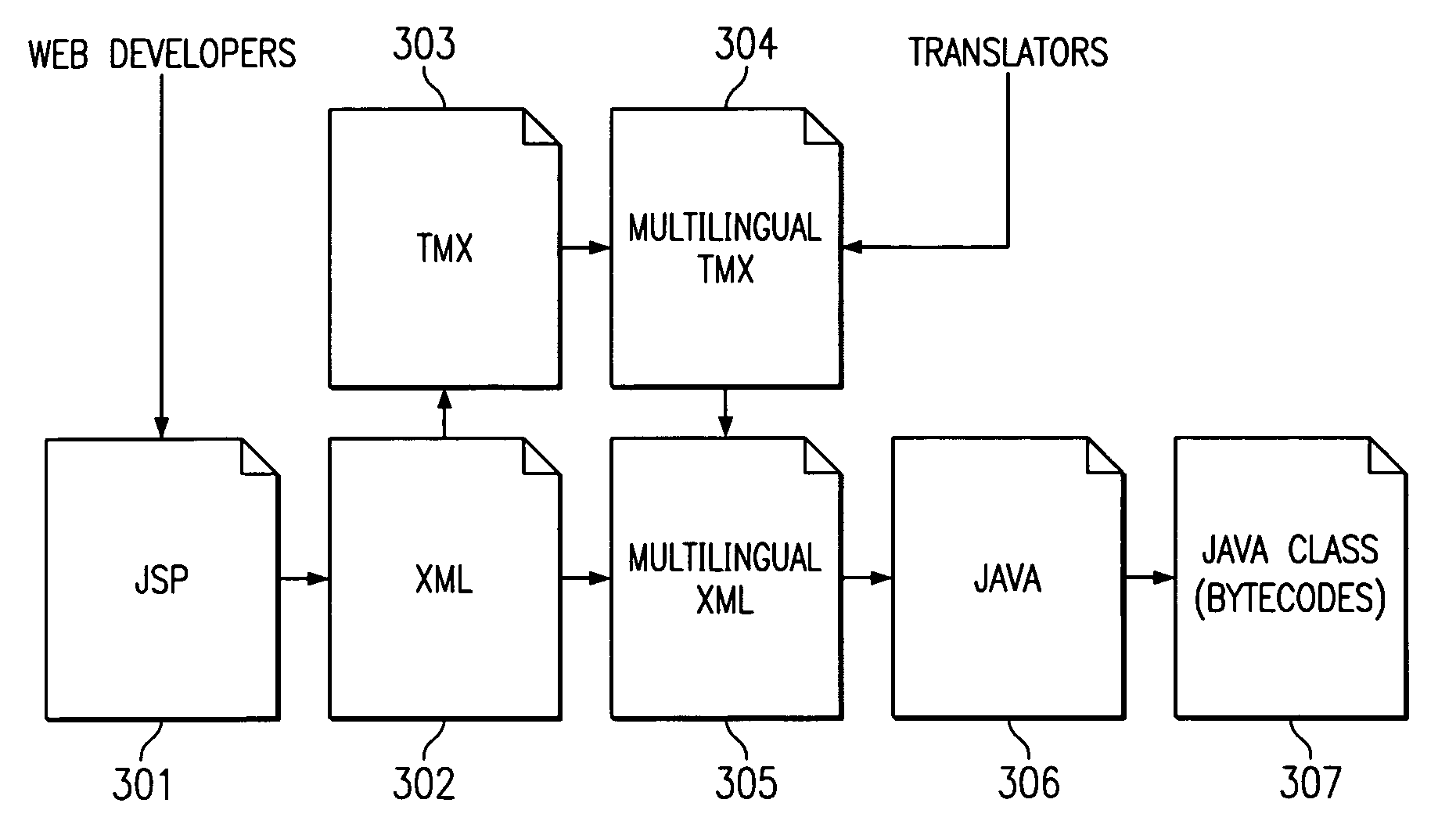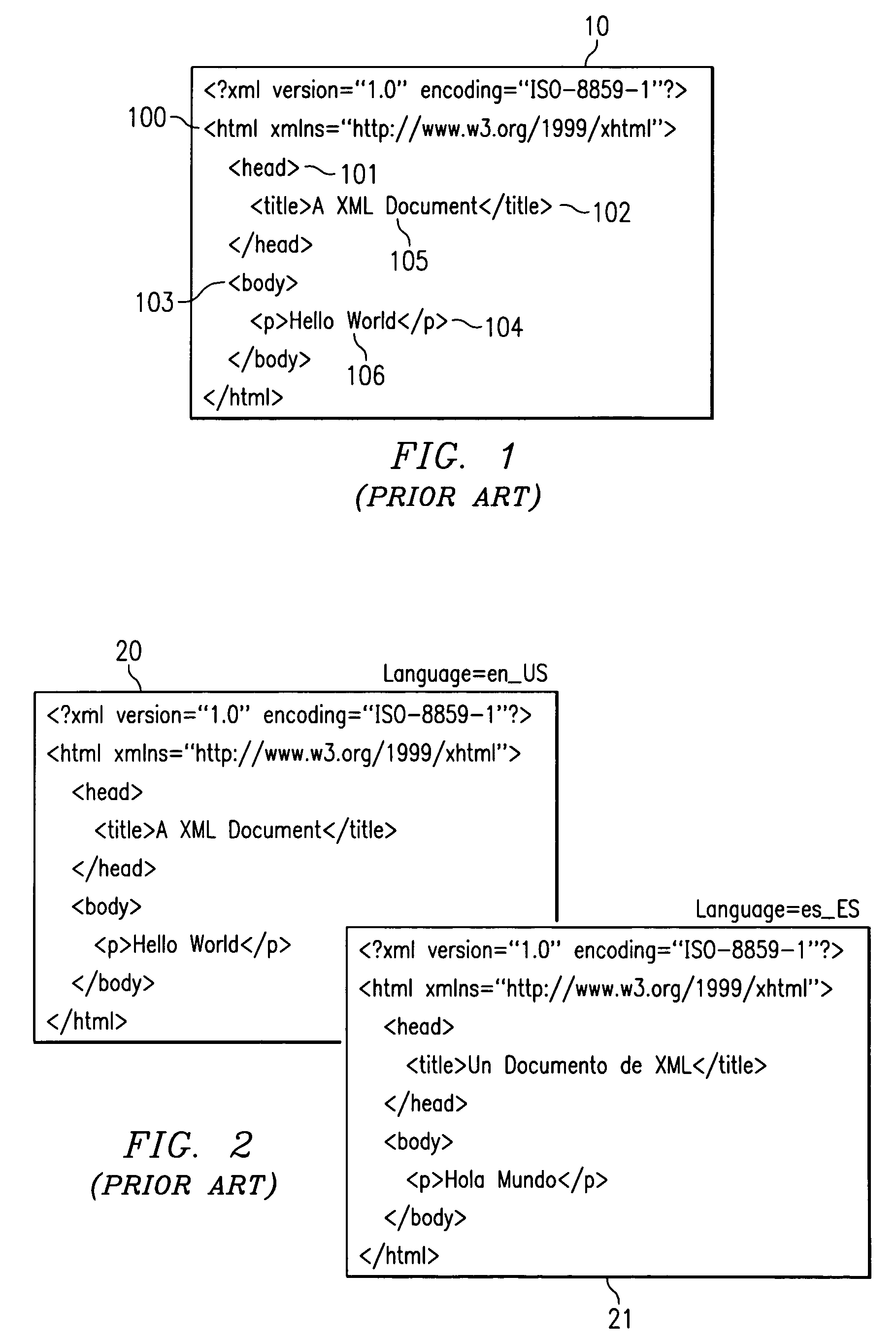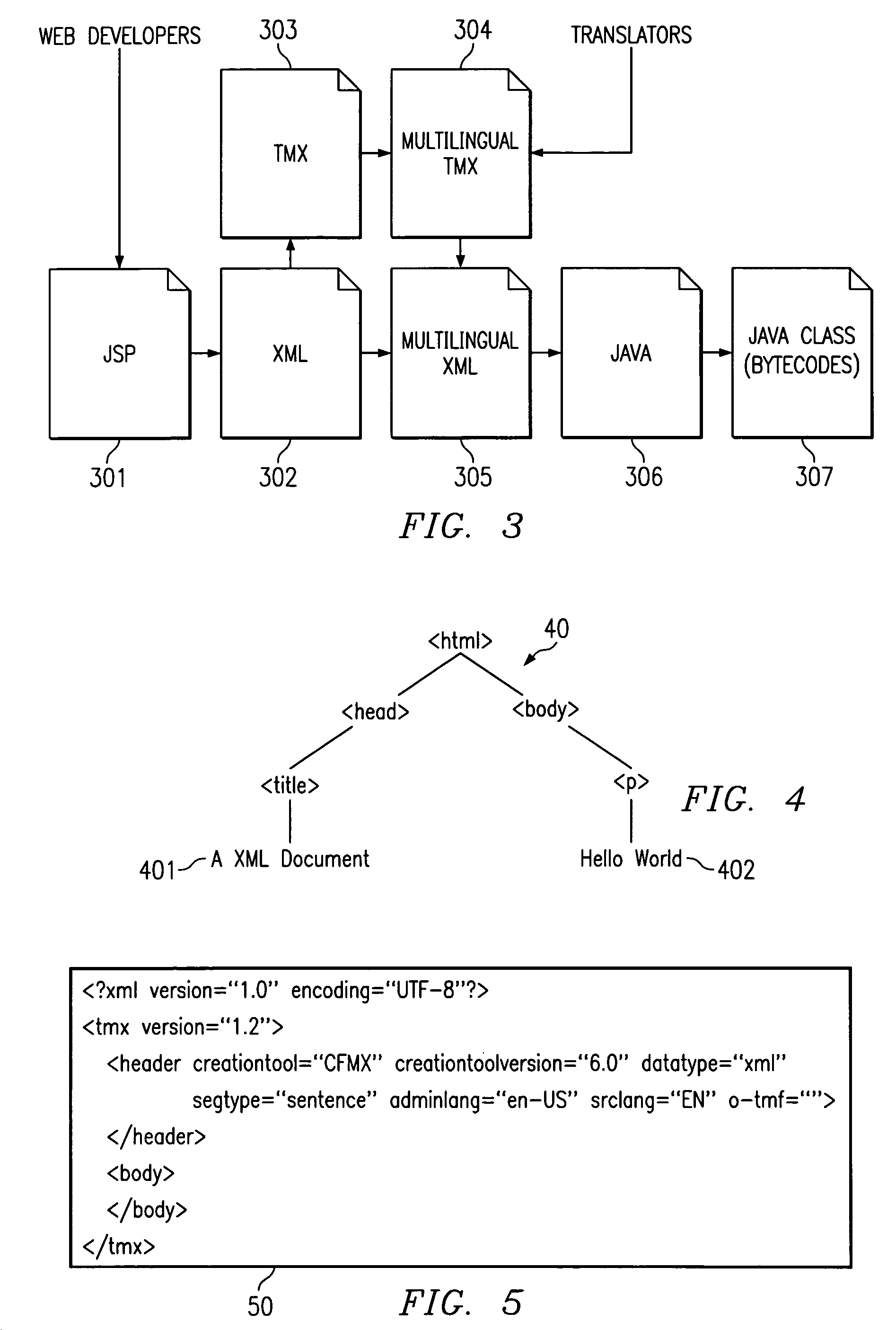Web application internationalization
- Summary
- Abstract
- Description
- Claims
- Application Information
AI Technical Summary
Benefits of technology
Problems solved by technology
Method used
Image
Examples
Embodiment Construction
[0022]The present invention may be implemented for any type of source document. The concept is to convert a single language source document into an executable injected with multiple, selectable language translations. The system and method may be implemented using any server page technology, such as Sun's JAVA SERVER PAGES™ (JSP), Macromedia's COLDFUSION™, Microsoft's ASP™ (or ASP™.NET), PHP Hypertext Preprocessor (PHP), or the like. Additional embodiments of the present invention may also be implemented directly using a data-centric meta-language, such as XML. The embodiments described herein will note implementation in JSP and / or XML; however, it is not intended and should not be taken to limit implementation of the present invention solely to XML or JSP server page technology. Furthermore, while the embodiments described herein refer to the resulting executable file as a JAVA™ class file, it should be noted that any type of executable, including an .exe file, may be used to implem...
PUM
 Login to View More
Login to View More Abstract
Description
Claims
Application Information
 Login to View More
Login to View More - R&D
- Intellectual Property
- Life Sciences
- Materials
- Tech Scout
- Unparalleled Data Quality
- Higher Quality Content
- 60% Fewer Hallucinations
Browse by: Latest US Patents, China's latest patents, Technical Efficacy Thesaurus, Application Domain, Technology Topic, Popular Technical Reports.
© 2025 PatSnap. All rights reserved.Legal|Privacy policy|Modern Slavery Act Transparency Statement|Sitemap|About US| Contact US: help@patsnap.com



